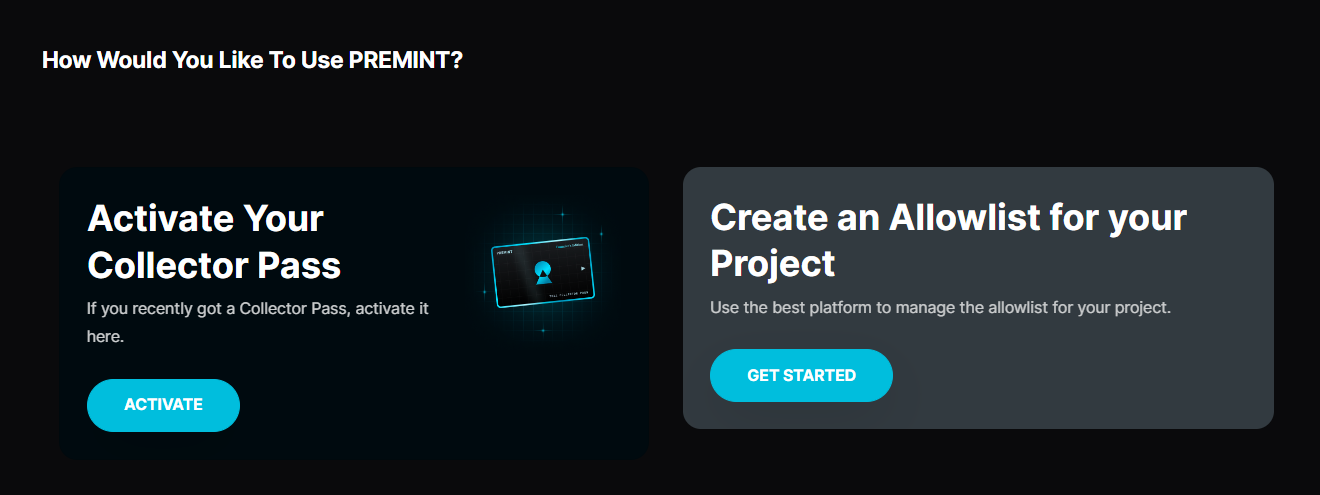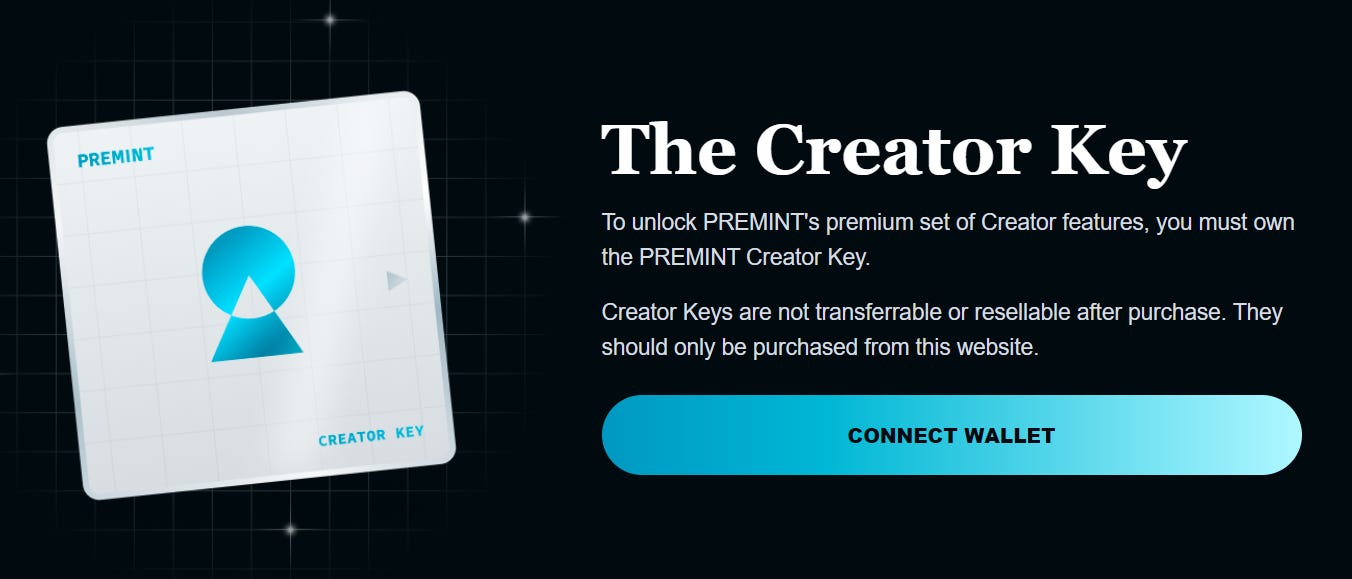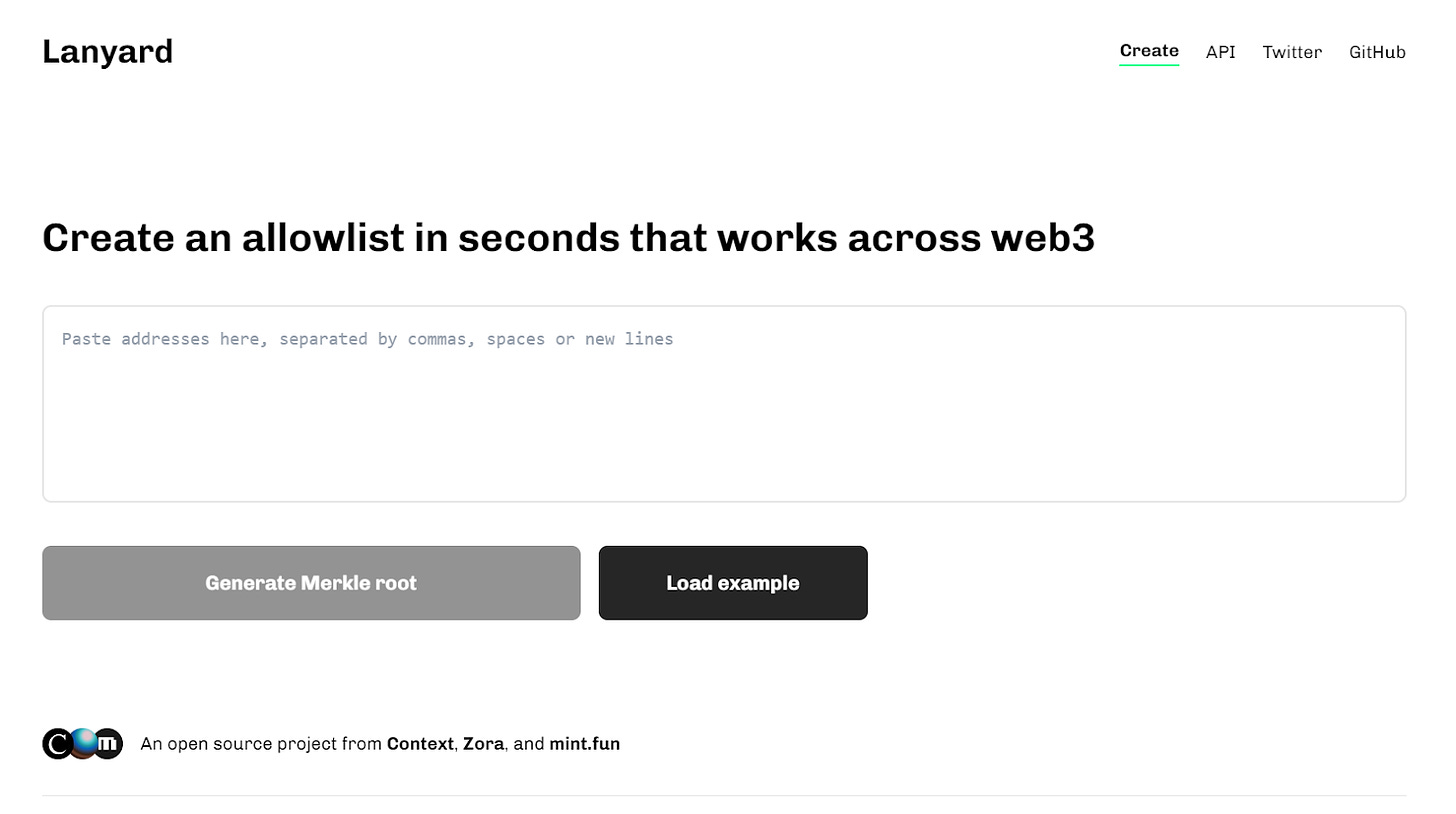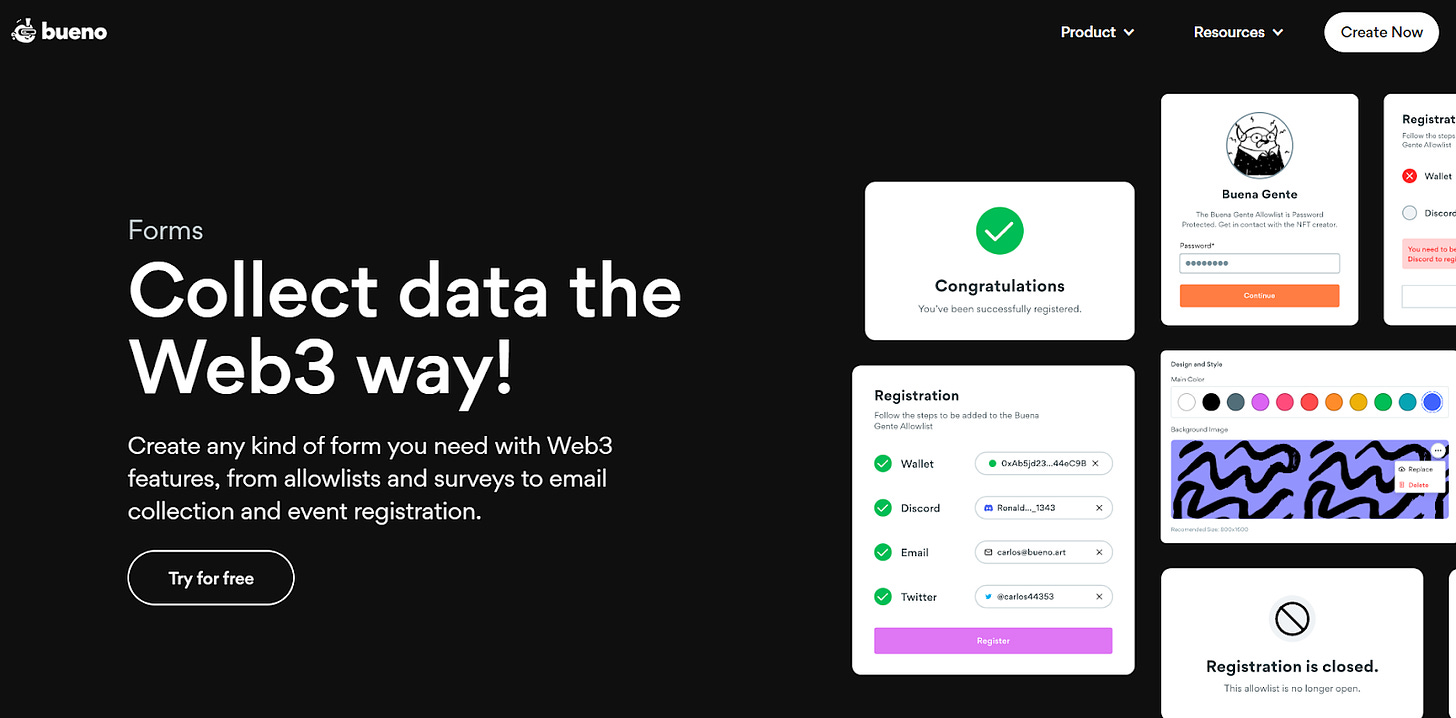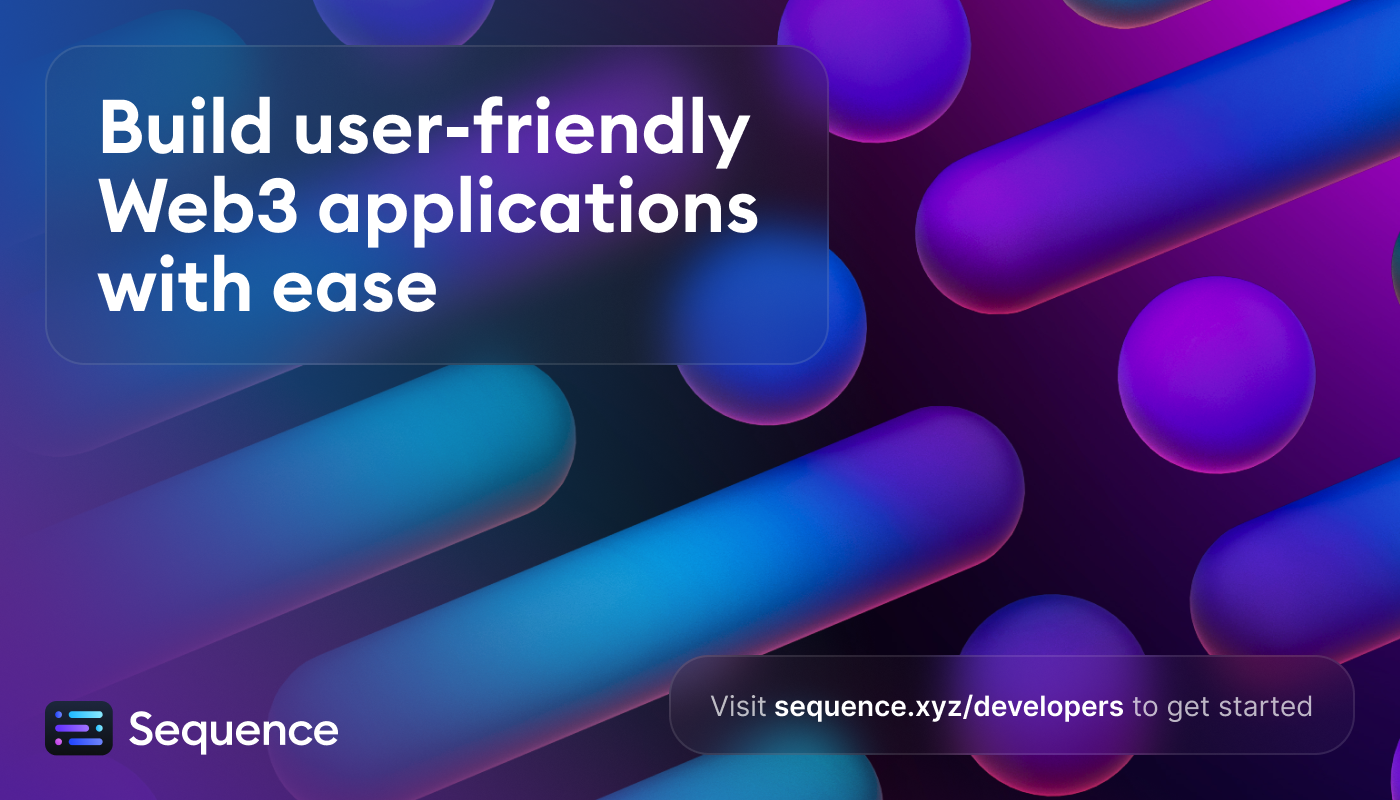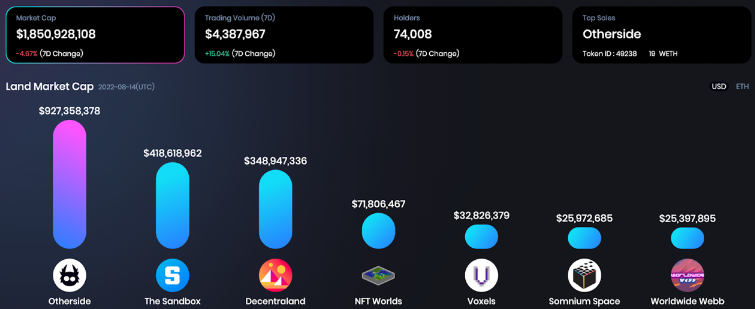Metaversal is a Bankless newsletter for weekly level-ups on NFTs, virtual worlds, & collectibles
Dear Bankless Nation,
Your NFT skill tree is growing fast.
Now you know how to generate a large NFT collection and create your own minting UI.
But what about setting up the actual parameters of your mint?
In that vein, another helpful skill to learn is how to create your own allowlist, which will let you manage which people and communities can mint from your project.
The good news? There are some awesome DIY NFT allowlist tools currently available. Let’s walk you through a few for today’s Metaversal!
-WMP
🙏 Sponsor: Sequence—developer platform + smart wallet to build user-friendly web3 apps✨
PREMINT is an NFT allowlist raffle service.
Let’s say you’ve created a collection of 1,000 CC0 NFTs, and you want to specifically allowlist holders from other top CC0 NFT communities that you think will align well with your project’s values.
Cue in PREMINT, as the platform makes it simple to build custom allowlists based on your eligibility requirements.
Using the previous example, you could approve holders of top CC0 projects like Nouns, CrypToadz, and Blitmap to freely register for your mint. And since you’d end up with more registrants than mintable NFTs, PREMINT can facilitate a raffle to randomly pick out your allowlist winners.
However, you’ll want to keep in mind that PREMINT’s free features are limited. Namely, the first 250 addresses to a simple allowlist are free, and your first five smart contract snapshot saves are free, too.
If you want to go past these limits and access the full suite of PREMINT’s allowlist tools including the raffle system, you’d have to pick up one of the project’s Creator Pass NFTs. These NFTs cost 1 ETH each, have an unlimited supply, and are purchased and redeemed through the PREMINT website to unlock premium features in perpetuity.
Designed by the Context, mint.fun, and Zora teams, Lanyard is a new open-source allowlist creator tool that helps you build universal NFT allowlists for use across web3.
In Lanyard’s Mirror announcement post, the creators described how and why the system works:
“Well, Lanyard securely stores your allowlist, Merkle root, and proofs so that your community can mint your project from their preferred interface — your website, mint.fun, and any other platform that integrates Lanyard. As more and more mints happen on platforms like mint.fun, it’s important that creators’ allowlists are part of the horizontal web3 stack and not siloed to a specific project page implementation.”
As for actually using Lanyard, once you’ve generated a Merkle root from your desired addresses, you’ll be taken to a page where you can copy your Merkle root and where you can find instructions on how to load this root into your NFT smart contract. This part of the process gets pretty technical, but the Lanyard site offers an excellent how-to guide plus there’s free support in the Context Discord.
Bueno builds no-code tools for NFT creatives.
I’ve previously walked you through how Bueno’s Art Generator and Smart Contract Deployer resources work and what its Microverse is all about, but the project’s newest tool is Bueno Forms, which makes it easy to create and manage web3 forms like allowlists.
Once you have your form prepared and you’re happy with the number of responses, you can download a .csv file of the registered addresses and take it over to the “Contracts” part of the Bueno dashboard, where you can upload it right into your latest Bueno project. Easy from start to finish!
So you’re building out an allowlist, but some people have manually submitted their Ethereum Name Service .eth domains via social media instead of their alphanumeric Ethereum addresses.
The problem here? You’ll need to convert the ENS names to alphanumeric addresses to actually allowlist them in your smart contract. Toward this end, nnnnicholas.eth has developed a resource, ens2hex.vercel.app, that converts ENS domains to 0x addresses. This tool can save you the time of having to go through each of the domains one by one to copy out their 0x addresses, so keep it on your radar!
-
📜 Check out the PREMINT, Lanyard, and Bueno Forms allowlist resources
-
🙇 See my previous write-up NFT minting UIs tools if you missed it!
William M. Peaster is a professional writer and creator of Metaversal—a Bankless newsletter focused on the emergence of NFTs in the cryptoeconomy. He’s also recently been contributing content to Bankless, JPG, and beyond!
Subscribe to Bankless. $22 per mo. Includes archive access, Inner Circle & Badge.
Build user-friendly web3 applications with ease and deliver a seamless web3 experience to your users! Sequence is a comprehensive developer platform and smart wallet for the Ethereum + EVM ecosystem.
-
Seamless and secure onboarding
-
No gas fees for your users
-
Direct NFT purchase with credit/debit
-
NFT marketplace protocol, and more tools, so you can deliver a seamless web3 experience to your users.
👉 Integrate Sequence Wallet into your app
👉 Make your web3 app user friendly with developer tools
Not financial or tax advice. This newsletter is strictly educational and is not investment advice or a solicitation to buy or sell any assets or to make any financial decisions. This newsletter is not tax advice. Talk to your accountant. Do your own research.
Disclosure. From time-to-time I may add links in this newsletter to products I use. I may receive commission if you make a purchase through one of these links. Additionally, the Bankless writers hold crypto assets. See our investment disclosures here.



